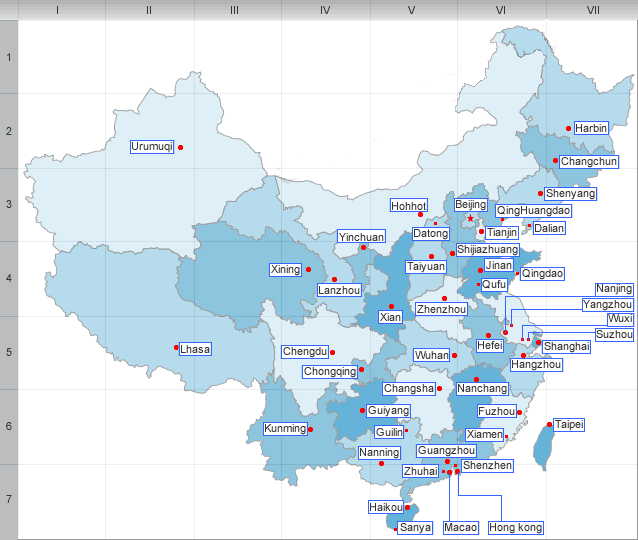Xinzhou Overview
Overview
Xinzhou City is located in the mid-north of Shanxi Province with the total area of 25,180 square kilometers. It is the political, economical and cultural center of Xinzhou District. The physical features of Xinzhou are high in the west and low in the east; Xinzhou city is embraced by mountains from the south, the west and the north directions; flat land, hills and mountain areas take up one-third respectively of Xinzhou; the Yunzhong River and the Muma River flow here and the Hutuo River flows along its boundary. Xinzhou is with Taiyuan which is the capital of Shanxi Province on its south, the Buddhism shrine -Wutai Mountain on its east, the coal capital-Datong on its north. It is a new city taking light industry as its major industry, developing building materials industry and serving for constructing the energy and heavy chemical industry base.
Xinzhou City is the door of the north of Jinyang, surrounded by mountains. It is with vast territory, a part of Qinjin Plateau. It has always been a strategic place. Xinzhou City has advantageous geographic location, convenient traffic condition and rich tourist resources. In recent years Xinzhou has exploited many scenic spots, such as, "the first cave in North China"-Yu King Cave, "the first spring under the heaven"-the hot spring in Qi Village, "the first village in Sanjin"-Dun Village (a spa vocation village), etc. Xinzhou has taken initial shape of a tourist zone with exploring, spending summer holiday and entertainment as its themes. The major scenic spots are: Yu King Cave, "Chinese Myth Palace", Adventure World, Yuanhaowen Tomb, the homeland of Diaochan, etc.
As Xinzhou is situated at the middle reaches of Yellow River, the eastern part of loess plateau and on the west side of the North China Great Plains, its special climate, soil conditions, ancient cultural traditions and folk customs have formed unique natural and cultural wonders. This land features precipitous mountain peaks, verdant and lush forests, stretches of serene lakes, and various rare and precious birds and animals, all contributing to the unique views of Xinzhou.
Its tourist resources are distinctive, and it’s pervaded by Mountains, rivers, temples, springs, caves, forests and other places of historical interest. Xinzhou possesses numerous heroic natural resources and historical relics. There are 293 scenic spots in which 112 ones have been developed.
In Xinzhou, the Buddhist sacred land, Mount Wutai, which is the first of the Four Buddhist Holy Mountains, is one of the 35 scenic areas that are issued by the State. There are 10 State-level key units of cultural relics protection. Four national forest parks like Mount Wutai and Mount Luya. The historic passes in the Great Wall, like Yanmen Pass, Ningwu Pass and Piantou Pass.
| PREV:Shuozhou Overview | Next:Hanzhong Overview |



